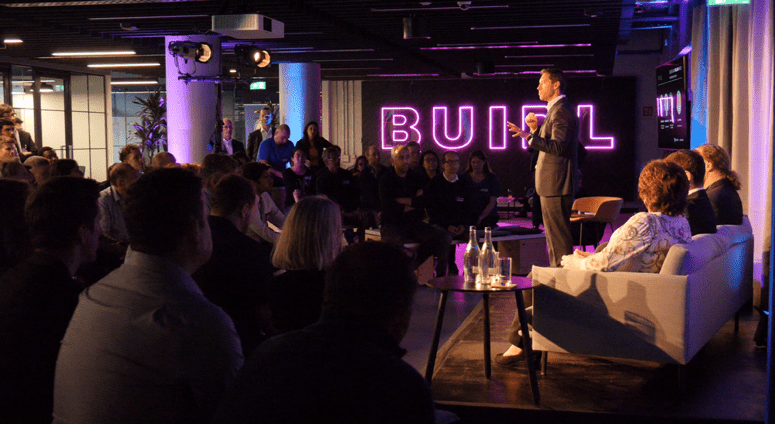Pictured: Lory Kehoe, Managing Director, ConsenSys
Lory Kehoe is Managing Director at ConsenSys, a blockchain software technology company. In this article, he explains the need for companies to embrace organisational diversity in order to eliminate obstacles for women, minorities and LGBTQ+ people in the hiring process.
The Business Case
There is a robust and ever-growing business case for diversity – statistically, diverse companies indicate superior revenue and risk management, more gender-diverse R&D teams tend to produce more innovation, and gender balanced boards improve financial outcomes. Building a company under a clear diversity agenda from day one is not only beneficial, it’s the responsible way to launch a business. Furthermore, a diversity and inclusion (D&I) supportive culture can improve retention, provide a wider pool of talent and improve a firm’s reputation.
While ‘inclusion’ may sound rather intangible, the fact is that it plays a crucial role in fostering the right dynamics for innovation. Allowing for an environment in which all staff feel comfortable to share ideas – even abstract ones, take risks, speak their minds, and work collectively to generate solutions is important. This makes diversity and inclusion a significant economic success factor that any company would be totally remiss to overlook. D&I is not simply a HR strategy – it’s an innovation strategy.
Tech start-ups have the opportunity to set the standard for how modern day companies operate from the outset. It goes without saying that the STEM sector in particular has a reputation as a male-centric domain, so making concerted efforts towards inclusive hiring and culture building is entirely essential. Without genuine effort made by tech companies who represent some of the fastest growing and highest paying sectors in the world, a more balanced egalitarian society is far off. And indeed, innovation is inhibited.
Challenges
A number of gender-based challenges which perpetuate existing disparities present themselves to the majority of companies. These include inherent unconscious biases which are social stereotypes about cohorts of people that can subtly act to reinforce structural sexism. Take for instance the image that comes to mind when you think of a university professor? I would guess that a large proportion of you conjure up a picture of a middle-aged white male? This biased assumption can then guide behaviour right through the hiring process. If you were to write up a job advertisement for such a role, you would likely draft it with this individual in mind, using language that you believe would resonate with this category of individual, and you may not even realise you are doing it. When conducting interviews, another type of unconscious bias – ‘confirmation bias’ – can also play a role. That is to say that you would associate positive qualities with, and favour individuals who, sound, act and look like you.
The ‘gut feeling’ that so many managers reference in hiring decisions can indeed be largely driven by a given individual simply fitting a preconceived notion of what the ideal candidate should be like, all without any intention of prejudice. This has even been shown to play a role in CV shortlisting, with candidates with more local/anglicised names receiving a much higher level of call backs, and of course referrals tend to be biased as your network typically tends to look a lot like you. Unconscious bias training can be pivotal in helping leaders to mitigate norms and behaviours that are not conducive to the diversity and inclusion agenda, thereby preventing inherent biases manifesting in the perpetuation of inequality in hiring, promotions and so on.
“When conducting interviews, another type of unconscious bias – ‘confirmation bias’ – can also play a role. That is to say that you would associate positive qualities with, and favour individuals who, sound, act and look like you.”
In the context of a startup, it is incumbent upon founders to mindfully examine their biases, it can also be vital for these leaders to make efforts to consciously shift their focus in hiring away from what they might expect a given candidate to look or behave like and instead focus on the objective criteria. Furthermore, as time-strapped and eager to fill roles as leaders may be, it can be worthwhile to bide your time until you have a diverse pool of candidates to interview. Instead of lamenting the lack of female applicants for your posting, you should examine why they haven’t applied. Studies have shown that substantial and consistent use of masculine and technical language in job descriptions can deter these applicants and minimise your talent pool.

“It is important to acknowledge that gender inequality and imbalance affects everyone.” Lory Kehoe is Managing Director of ConsenSys.
Initiatives to Leverage Data
Closing the gender pay gap is an imperative component of the D&I agenda. Workforce analytics can be leveraged to help identify compensation inequities by role. I would also highly recommend that organisations of any size draft up a dashboard to be updated for tracking purposes every quarter. These dashboards should be owned by department leaders and not Human Resources. A dashboard specific to each division with similar diversity metrics can be developed to provide the opportunity to identify more granular, and specific challenges and opportunities for action to achieve greater gender balance across the organisation. Dashboards can map out breakdowns and details such as gender analysis’ on applications received to track how well the given department is doing in appealing to a diverse talent pool, and can identify any leakage of female talent towards leadership positions.
Quick Win Interventions
It is important to acknowledge that gender inequality and imbalance affects everyone. For men, it can play out in stereotypes and stigma regarding caring responsibilities, flexible working or pressure to be the breadwinner. For women, inequality can play out in stereotypes or assumptions about a woman’s role, career aspirations and their role in caring and home responsibilities. Increasingly, domestic and caring responsibilities are more evenly shared between the sexes, are therefore actions and policies should apply to and be positioned to benefit all. Fostering helpful norms and creating self-awareness amongst leaders sits at the core of this. If a decision is to be made, all ideas could be canvassed and collected prior and tabled with all members having equal opportunity to explain their idea without interruption rather than wait for an opportunity in a meeting which may never happen. In recruitment, orgs could benefit from operating with case-based interviews which help reduce the influence of inherent biases. Following this, all hiring decisions should then be reviewed and challenged and eliminate direct appointments which may favour men who have stronger internal network.
Inclusion is all about nurturing a sense of belonging amongst your team, and also conveying the right signals to a diverse set of prospective hires – that they too could belong and flourish within your culture. Informal networks that are present in a given company may act to marginalise female members of the team. For instance, football team participation or fantasy football league groupings can play a notable role for those participating in internal networking, positive mental health and in-group / out-group mentalities.

“Inclusion is all about nurturing a sense of belonging amongst your team, and also conveying the right signals to a diverse set of prospective hires”
If there are more men than women in a given organisation, there will naturally tend to be more male-centric networking channels. As an example of a more inclusive casual gathering, why not run a draft system in which a diverse set of 4 employees are selected each fortnight to go for a company expensed lunch? This can catalyse relationships by allowing individuals to socialise and network that may not previously have done so, this can be pivotal in breaking down siloed staff.
With startups operating from a clean slate, it is essential to be aware of these social factors and make efforts to work to build inclusive social structures from the outset. Many young tech companies use trappings of ‘geek culture’ or generally masculine culture to foster the ‘fun environment’ that they believe will resonate with their talent base. However, the beer on tap, foosball tables and arcade-gaming machines don’t create a balanced environment that is conducive to the inclusion agenda. Some women may feel right at home with these cultural aspects of a firm, but the fact is that they could send negative signals to prospective female employees making them feel like they might not fit in, and create an exclusionary atmosphere for many existing staff. One important tool can be to regularly run a review of social events – who got involved? What were the demographics in comparison to those of the wider company? What factors may have been behind this – the time of day? The nature of the event? And so on.
Game Changing Interventions
While there is a lot of effort put into building a diverse pipeline of talent, this can also be used as an excuse for not having a diversity centric agenda established from day one. The excuse that there are not a proportionate number women/minorities/LGBTQ+ individuals interested in tech at present to create a balanced tech company, can never be used to justify resting on our laurels.
As researchers at Cornell found, failing to create the right environment for diversity to thrive early on can put companies at risk of ‘puncturing the pipeline’. Indeed, some studies have indicated that even women who pursue STEM college programmes and have the necessary tech-aligned interests and talent, exhibit higher uptake of careers outside the sector compared to their male classmates. This disparity has income implications which reverberate inequalities back into society. Examples of puncture points could be gender-imbalanced presenters at recruitment events, lad or geek-culture, promotion of male-centric company social structures, the use of gender stereotypes and other marginalising signals.
“The excuse that there are not a proportionate number women/minorities/LGBTQ+ individuals interested in tech at present to create a balanced tech company, can never be used to justify resting on our laurels.”
There is also a legacy perception that all the leadership roles require a depth of technical expertise and this can be intimidating to female applicants who have a stronger tendency to doubt their abilities. Organisations need to foster a developmental mindset to invoke change and instil a consciousness in all employees that the world is evolving and talent needs to constantly develop, learn and be agile and versatile.
High-level Implementation Plan
What is key is nurturing the interest in women, at the point of recruitment, into careers in tech, or students into STEM programmes. It is about creating the type of companies in which these individuals could envisage themselves working in and ‘fitting in.’ Foster helpful norms, leverage data to monitor progress and benchmark, destigmatise flexible working, promote understanding of unconscious biases, increase access for women to informal networks, represent your females as role-models, encourage diversity of thought, and most importantly of all – act on this now.






